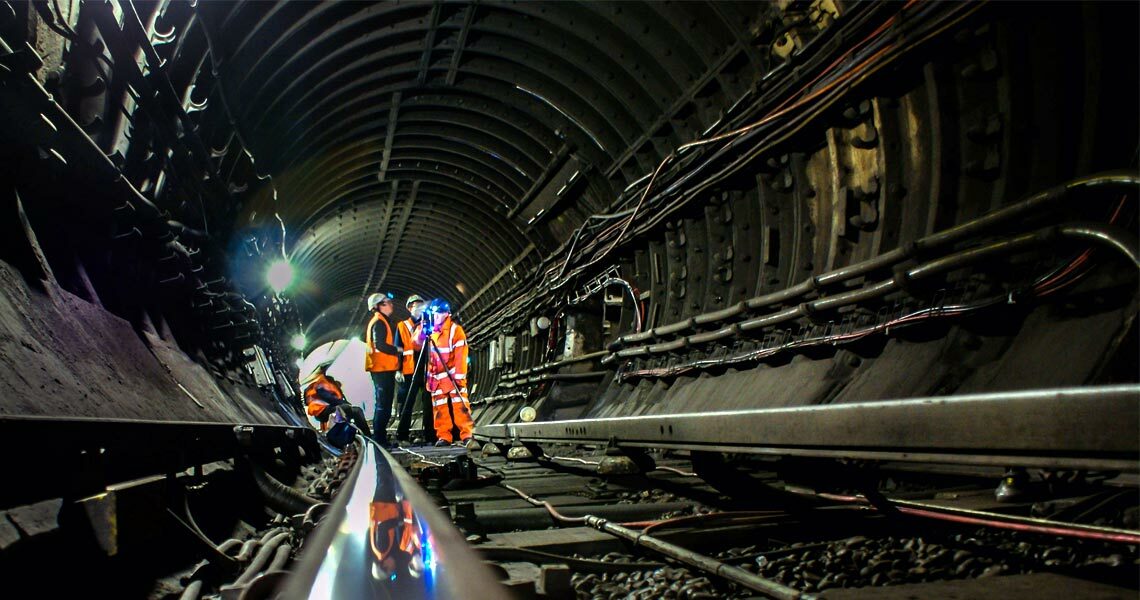1. Introduction
Once bulk 3 phase AC electricity has been generated it has to be transmitted to the populated areas where it is required and then distributed to the individual users.
Almost everyone will be familiar with the sight of a line of overhead electric conductors stretching far off into the distance, supported from tall steel lattice towers or even small wooden poles but does everyone appreciate why overhead conductors are used instead of the buried cables which are invariably used within cities and towns?
Electric power, be it generated in traditional power stations or by sources of renewable energy generated by solar or windfarms has got to be transported to the end customer or user, as economically, efficiently and safely as possible with of course, the utmost reliability.
In the UK there are basically two means of achieving this, by bare overhead conductors or insulated cables buried underground.
Bare overhead conductors are the most popular when lots of electrical energy needs to be carried at high voltage, over long distances, across the open countryside or open spaces.
Buried insulated cables are the most popular when electrical energy is carried at lower voltages over short distances or within populated areas such as our towns and cities. But why?
Note: Currently the most popular form of electricity used is AC and so the vast majority of onshore transmission and distribution lines in the UK are AC lines, these are the lines considered in this paper.
2. Summary
The decision regarding the question “overhead or buried” is most greatly affected by the voltage.
Based solely on cost, transmission and distribution lines would almost invariably be by overhead conductor given the basic cost of the component parts but more importantly the associated installation costs.
Unless there are particular circumstances along the route which mitigate against the use of overhead lines the most popular transmission lines at 275 kV and 400 kV will continue to be bare overhead conductors.
However, at lower voltages for distribution, although bare overhead lines do invariably cost less they are for a number of routes, impractical, such as where the route is within a populated area, or it will cause environmental and visual impairment. Improvements in cable insulating materials, manufacturing and installation techniques are also starting to make buried insulated cables up to 132 kV a far more attractive proposition.
3. Background
The UK Electrical Industry is a mature industry with over 50 years of experience using long established transmission and distribution systems.
Traditionally power from large coal, gas or nuclear power stations is transmitted throughout the UK at 275 kV or 400 kV by the National Grid Group plc using its network of overhead conductors supported by tall steel lattice towers. They carry this power to grid supply points from where the Distribution Network Operators (DNO’s) take over to continue the distribution of this power to the end customer and user.
To date these are the optimum voltages which minimises the cost of the national overhead transmission system. Only a few special circuits use buried cables operating at these voltages.
The National Grid transmission system is made up of approximately 7,200 kilometres (4,470 miles) of overhead line, 1,400 kilometres (870 miles) of underground cable and about 330 substations 2)
The increase in the generation of renewable energy has placed extra burdens and challenges on the National Transmission Grid, mainly as a result of their increasing number, their size relative to traditional power stations and their locations, being away from existing transmission lines, means that extensions and reinforcement of the existing network is required.
Because of this, the National Grid is, by its own admission, having to “… transform at an astonishing rate …” Quote by Fintan Slye, director at National Grid ESO.
From this main National transmission network, the DNO’s then distribute electricity at lower voltages typically 132 kV, 66 kV and 33 kV using a mixture of smaller steel lattice towers, wooden poles or buried underground cables.
4. Simple Physics
4.1 Power
In simplistic terms the amount of electrical power is calculated from the sum of the voltage multiplied by the current
P = V x I
It therefore follows that the same amount of power transmitted at a higher voltage will result in a lower current so that smaller conductors can be used, and lower current mean lower (I2R) losses, conversely more or better insulation will be required to withstand the higher voltage.
It is for this reason that the UK transmission network is based upon 275 kV and 400 kV, in other larger countries where transmission distances are longer, even higher transmission voltages, or even DC, are used.
5. Heat
When calculating the Continuous Current Rating of a cable the following basic factors are taken into account.
All conductors have a measurable value of resistance, when a cable is energised and a potential difference exists between points in a circuit, then a current will flow. The mere act of this flow of current having to overcome the resistance is a form of work, heat is generated in the conductor and this heat must go somewhere.
In bare overhead conductors insulated by the surrounding air, this heat can radiate away freely, any wind or breeze will also speed up the escape of this heat.
With buried cables however the insulations, screens and sheaths that cable makers have to apply around the conductor to contain the electricity act as heat barriers – thermal insulation – and to a greater or lesser degree prevent this heat from radiating away from the conductor. The greater the thickness of insulation and covering, the higher the thermal barrier and slower the rate of heat escape from the cable.
For these reasons, for a given current rating, buried cables require larger conductors to control losses and to prevent the cable components from overheating and prematurely degrading.
6. Installation Costs
Several factors need to be considered when planning a new, or upgrading an existing transmission or distribution line, the decision cannot be made on installation costs alone. Each project must be considered based upon several factors each unique to the particular installation, so a detailed survey of the proposed route must be made.
The proposed route must always be surveyed and careful consideration given to not only the topography but also, where buried cables are being considered, what lies hidden below ground, whereas in the case of overhead lines the visual impact and the audible noise that can be generated by some 275 kV and 400 kV overhead lines needs to be considered. No two routes are the same and features identified during the survey may dictate that different routes have to be followed, a simple example for rural areas being solid rock which, although ideal for providing a firm stable base for the foundations of pylons, the civil engineering costs would prohibit the burying of underground cables.
Whatever method of installation is chosen access will be required for installation, maintenance and possibly repair, again this level of access varies between overhead and buried lines.
Installation of overhead conductors requires access to land so that pylons can be erected, and conductors strung, in this case access is usually limited to 2 or 3 vehicle widths along the length of the line. Civil engineering costs are typically limited to excavations of foundations for pylons or poles.
Insulated cables which are always buried either directly, in tunnels or ducts, require excavation and civil engineering work along the whole length of the route, not simply where foundations are required. Although the power to be carried at low voltage in towns and cities would only require a single trench of say 1.0 m wide by 1.2 m deep, with higher voltage transmission lines the size and number of trenches required to accommodate the number of circuits can result in access width of over 50 m being required.2)
Whichever method is chosen, overhead or insulated cable, installation costs go up as the voltage increases but the rate of increase is greater for buried insulated cables, if only because more joints are required for a given length of line.
As would be expected these installation costs are considerable, on 24th October 2016 the National Grid media release unveiled plans for the biggest new power line project since the electricity network was built
“It plans to build a 102-mile link costing £2.8bn to connect the proposed Moorside nuclear power station in Cumbria to the electricity network.
The National Grid has shelved plans for pylons in the Lake District and will now construct a £450m underground line running for 14.5 miles through the entire western section of the Lake District National Park.
The network operator has also proposed building a 13-mile tunnel under Morecambe
Bay to avoid the southern part of the park at a cost of £1.2bn
It is estimated that around £1.9bn will be spent putting sections of the connection out of sight – over 50% of the cost of the total project.”
In an Independent Report1) produced by Parsons Brinckerhoff in association with CCI Cable Consulting International. Endorsed by the Institution of Engineering & Technology – Issued in 2012 the following costs estimates were included.
“Overhead line lifetime cost estimates varying between £2.2m and £4.2m per kilometre.”
“Direct buried underground cable line estimates varying between £10.2m and £24.1m per kilometre.”
Other methods of underground installation such as deep tunnels can cost considerably more.
The Energy Networks Association (ENA)3) in their Environmental briefing No.2 – Transporting Electricity advise that “The capital cost of installing an underground cable is greater than that for an equally rated overhead line, the ratio ranging from about 2:1 at 11 kV to 20:1 or more at 400 kV. However, this is only a guide to relative costs, which depend on many local factors such as the ground conditions.”
However below 11 kV there is less difference between the overall costs, including maintenance, of lines and cables.
7. Reliability
As stated earlier one of the most important considerations for any power line is reliability – the continuity of supply.
The typical lifetime of an insulated buried cable is taken as a notional 40 years whereas that for an overhead conductor is notionally 25 years and it is over the whole of this lifetime that reliability must be ensured.
When it comes to potential disruption of supply then with overhead lines the disruption is typically due to weather as overhead conductors, especially those supported by small steel towers and wooden poles, are more vulnerable to damage by strong winds or ice and snow accretion. Lower voltage overhead distribution lines using bare conductors can also be damaged by accidental contact with falling trees as well as large pieces of agricultural and construction equipment. The adoption and increasing use of insulated Ariel Bundled Cables (ABC) has dramatically reduced the number of outages caused by trees or other objects falling onto power lines.
Of course, buried insulated cables are immune to weather related damage, the most common cause of disruption to these buried lines being careless use of construction
equipment causing damage to underground cables but the DNO’s use various methods to mitigate these accidents.
Once damage does occur however then it can take longer and is more costly to repair an underground cable because of the time taken to locate the fault and excavate a trench to expose the cable ready for repair, finally then reinstate the surface.
Whilst this is certainly true of old technology fluid filled cables (FFC and MIND) improvements in raw materials and the increasing use of Cross-Linked Polyethylene (XLPE) insulated cables mean that they are now being more widely used up to 132 kV and higher voltages. Simpler joints and terminations can be used with XLPE cables, once installed these, more mechanically robust cables, are self-contained and do not require any additional equipment or maintenance to allow them to continue to operate.
8. Cost of operation, maintenance and repair
The Parsons Brinckerhoff report1) found that, excluding build costs, the cost of operation, maintenance and energy losses over the life of the (HV) connection was broadly the same for undergrounding and overhead lines. However, the report also concluded that the capital build costs on their own vary greatly, depending on terrain, route length and power capacity.
An important consideration which is linked to access for maintenance and repair is the restrictions that need to be applied to future developments and use on or around the route of overhead or underground lines, the ENA paper3) gives additional information.
Overhead or underground personnel and vehicle access is required along the route for the operational lifetime of the asset.
9. Electric and Magnetic Fields.
Both overhead and buried cables are classed as producers of extremely low frequency (ELF) electric and magnetic fields (EMF) although high voltage overhead lines receive the greatest attention from the general public if only because they are visible.
Of the two types of field, electric fields (produced by the voltage) are easier to screen out than the electromagnetic fields (produced by the current carried).
The strength of both types of field reduces rapidly as the distance from the line increases, as would be expected standing directly under an overhead line or directly over an underground cable gives the highest exposure. However, even standing in these positions the exposure levels are below safety limits set by the International Commission on Non-Ionizing Radiation Protection (ICNIRP) to provide protection against known adverse health effects. To put it into context some items of electrical equipment in the home produce fields of higher values4)
Further information can be found in the ENA publication Electric and Magnetic Fields Facts.
10. Future Trends?
Like the UK Electrical Industry, the UK Cable Industry is a mature industry it is evolutionary rather than revolutionary. Where previously buried cables were cost effectively limited to a maximum rating of 11 kV gradual improvements in materials and technology are gradually increasing this limit making even 132 kV underground cables cost effective and commonplace. The technology is currently available to supply and instal cables at transmission voltages but costs effectively preclude this unless there are particular circumstances that apply.
High-temperature superconductors have been examined and hold out promise for low loss transmission of large amounts of electricity however their high cost currently limits them to short lengths used in specialist applications rather than general long line use.
11. Further readings
- The Institution of Engineering and Technology (IET) – Electricity Transmission Costing Study – An Independent Report produced by Parsons Brinckerhoff in association with CCI Cable Consulting International. Endorsed by the Institution of Engineering & Technology – Issued 31st January 2012 With errata April 2012 –
- National Grid – Undergrounding high voltage electricity transmission lines, The technical issues. National Grid Issue 4: January 2015
- Energy Networks Association (ENA) – Environmental briefing No.2 – Transporting Electricity
- Energy Networks Association (ENA) – Electric and magnetic fields the facts










